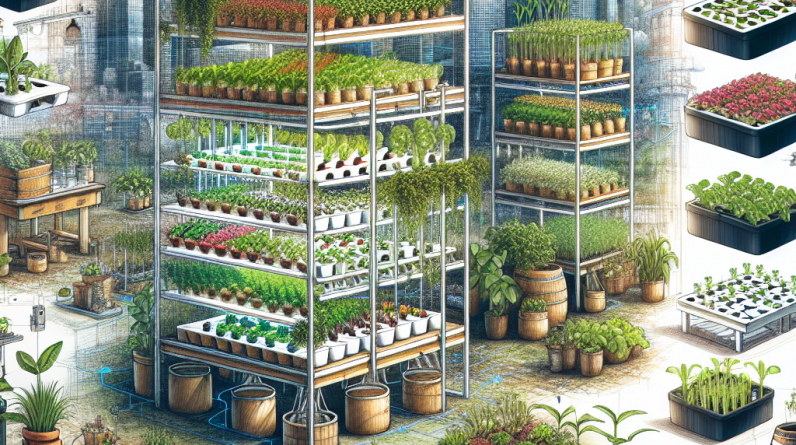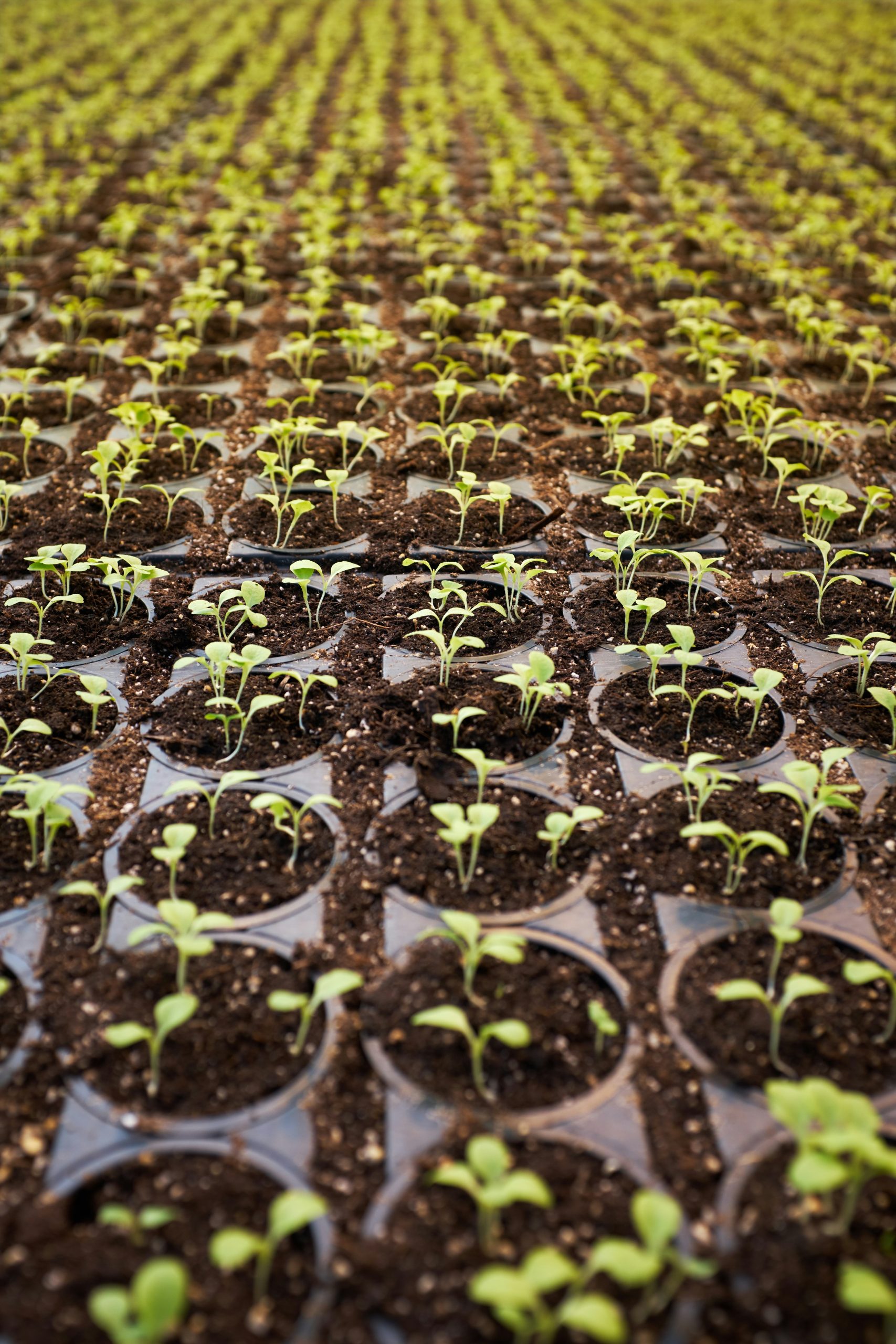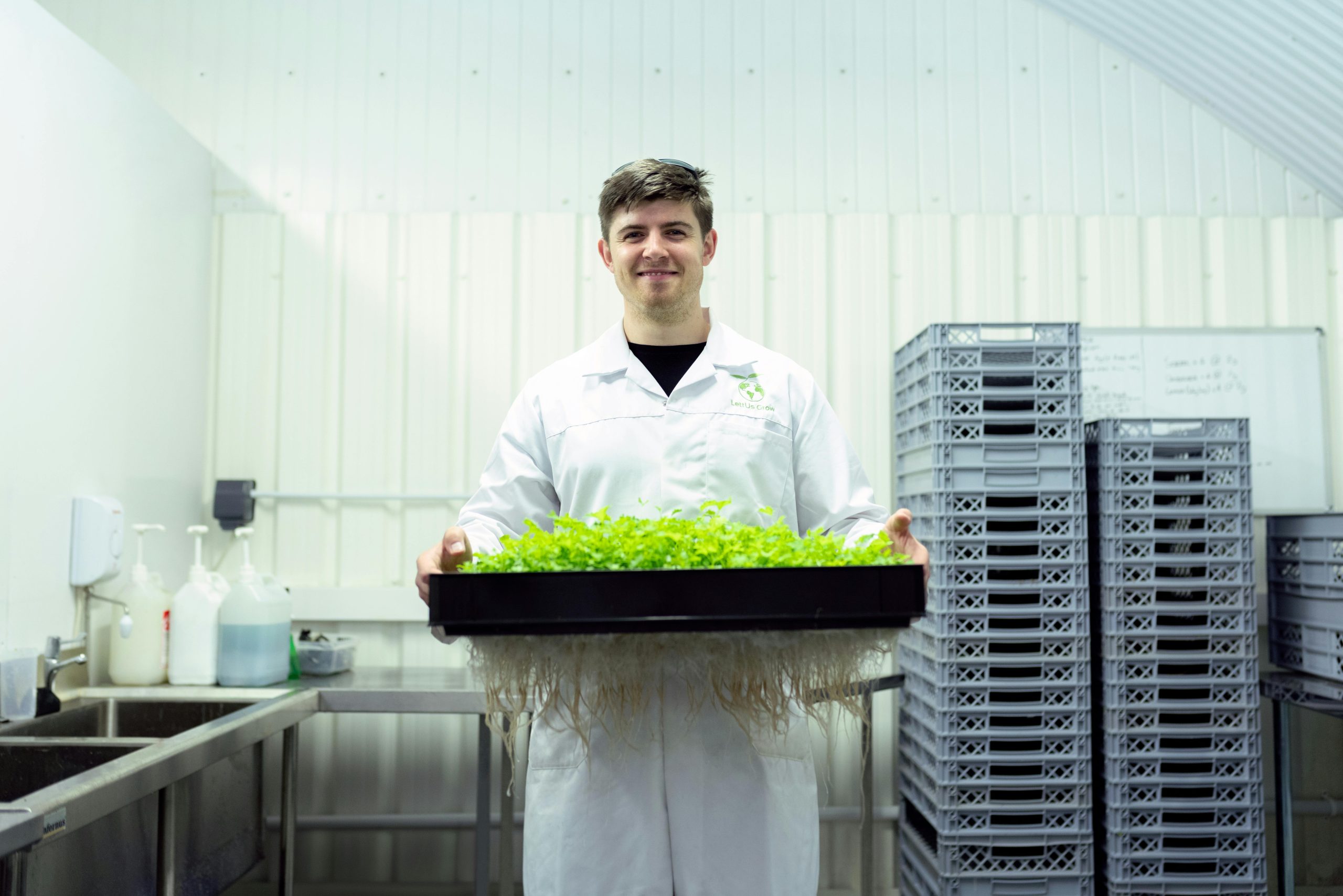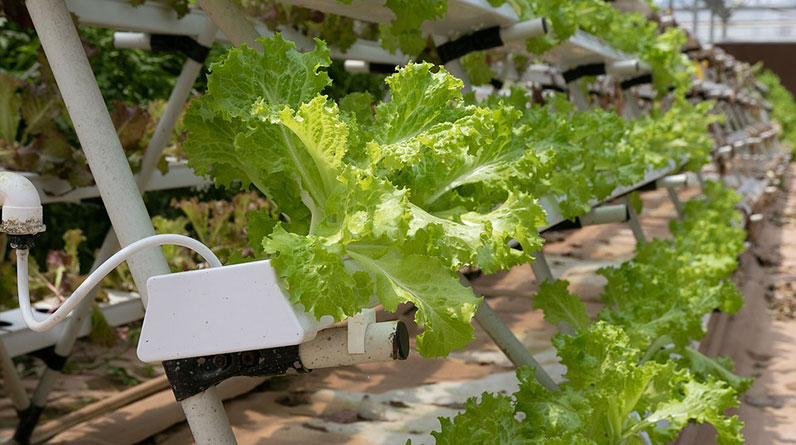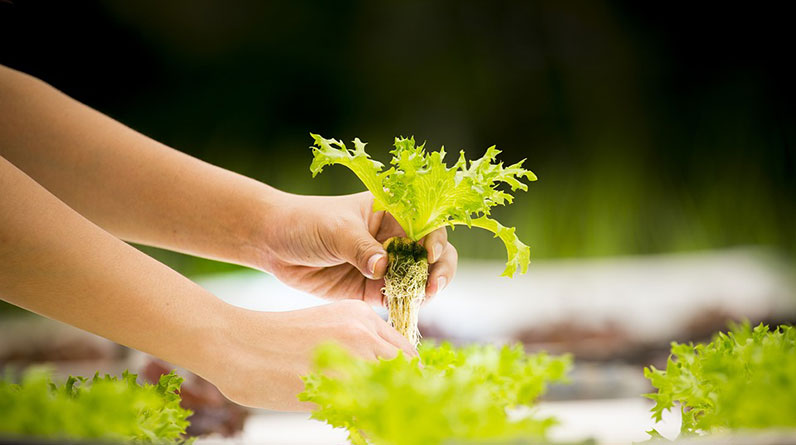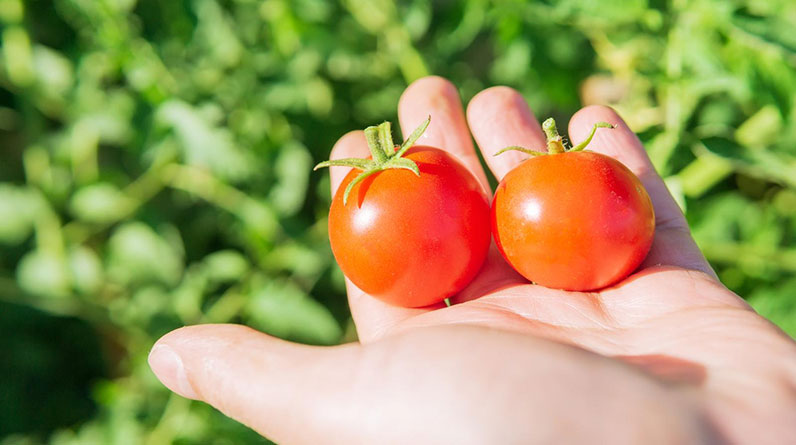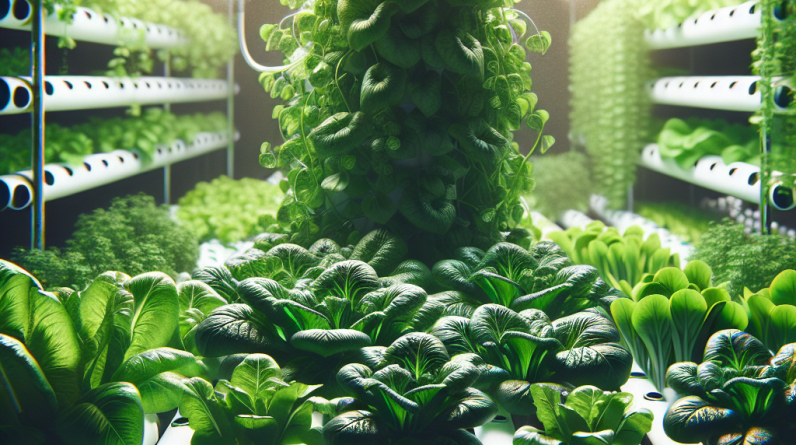
Understanding Hydroponics
What is Hydroponics?
Alright, let’s kick things off by breaking down what hydroponics really is. For those of you who might not be in the know, hydroponics is a method of growing plants without soil. Crazy, right? Instead, it uses nutrient-rich water to deliver everything the plants need to grow. This means you can make a garden just about anywhere — even in your little apartment!
This method isn’t new; it has roots (pun intended) going back thousands of years. Ancient civilizations utilized similar techniques while exploring the wonders of agriculture. Now, in our eco-conscious world, hydroponics has made a significant comeback, allowing us to grow organic produce year-round, even in urban areas.
So, why is it so popular? Apart from its efficiency, growing in water helps save space, water, and time, making it a smart choice for anyone interested in organic gardening. Plus, no soil means fewer pests and fewer diseases!
Benefits of Hydroponics
Now let’s talk benefits because who doesn’t love a good perk? First off, the efficiency of hydroponics is off the charts. Plants grown this way can grow up to 50% faster than traditional soil methods. Sounds tempting, doesn’t it? It’s like giving your veggies a turbo boost!
Secondly, you’re saving a ton of water. Hydroponic systems use about 90% less water than traditional farming methods. Think about it; in a world where water is becoming more precious, this is a game-changer!
Lastly, if you’re aching for some control over your garden, hydroponics lets you do just that. You can control pH levels, nutrient concentrations, and environmental conditions. This means healthier plants and tastier produce. Who wouldn’t want that when you’re chopping up organic lettuce for your next salad?
Types of Hydroponic Systems
There are several types of hydroponic systems, each with its unique twist. First up, we have the Deep Water Culture (DWC). Here, plants root into a nutrient-rich solution, literally bathing in goodness! This is a favorite for beginners because it’s easy to set up and manage.
Next, let’s chat about Nutrient Film Technique (NFT). In this system, a thin film of nutrient solution rolls over the roots. It’s like giving your plants a gentle, nutritious shower! This method is super efficient but requires a bit more finesse.
Lastly, we have the Ebb and Flow system, which is kind of like a mini water park for your plants. It floods the grow bed with nutrient-rich water and then drains it, allowing the roots to breathe. It’s an effective way to oxygenate those roots and keep them healthy!
Setting Up Your Hydroponic Garden
Choosing the Right Space
When starting your hydroponics journey, the first step is to find the right space. Depending on how much you want to grow, you’ll need to think about the size. If you’re just starting, even a corner on your countertop could work. Seriously, you don’t need a backyard to get your green thumb going!
Lighting is another critical factor. Plants need light, and if you’re growing indoors, investing in some grow lights will be key. Natural light is fabulous, but if you want to keep growing through winter, artificial lights will save the day!
Finally, consider temperature and humidity. Most plants thrive in moderate conditions, so keeping your setup in a cozy spot that isn’t too hot or cold is essential. Remember, happy plants equal yummy food!
Gathering Materials
Okay, let’s talk gear. The materials you’ll need can vary depending on the type of system you choose. For starters, you’ll need a reservoir for your nutrient solution. This can be as simple as a plastic container or a more elaborate tank, depending on your budget.
Next up is your grow medium. You’ve got options like rock wool, clay pellets, or coco coir. My personal fave is clay pellets because they’re easy to handle and provide great drainage!
Lastly, don’t skimp on nutrient solutions. These are specially formulated mixes that provide plants with everything they need. Many beginners often overlook this step and wonder why their plants aren’t thriving. Take it from me; a good nutrient solution is a must-have.
Maintaining Your Hydroponic System
Once your garden is up and running, it’s time for some TLC. Regular maintenance is key to keeping your plants healthy. You need to check pH levels and adjust nutrients every few weeks. This may sound complicated, but trust me, it’s as easy as checking your pool’s chemical balance!
Another aspect is monitoring your plants for signs of diseases or pests. While hydroponics is generally cleaner than soil gardening, you’re still not immune to unwanted guests. Keep an eye out and deal with any issues promptly.
Lastly, don’t forget about crop rotation! Regularly changing what you grow will help keep your system thriving and make the most of your nutrients, ensuring a bountiful harvest. It’s all about the balance, my friends!
Harvesting and Enjoying Your Produce
When to Harvest
Ah, the moment we’ve all been waiting for: the harvest! Knowing when to pick your delicious organic produce is crucial. Each plant has its signs; for instance, herbs are typically ready when the leaves are lush enough for cutting, while leafy greens can be harvested as soon as they grow substantial leaves.
Patience is a virtue here. If you pick your crops too early, you might miss out on their full flavor potential. But wait too long, and they get woody and tough. It’s a fine balance, but oh-so-rewarding when you get it right!
For fruits like tomatoes or peppers, look for vibrant colors and firm texture. That’s your cue that they’re ready for the table. Eyeing them daily honestly becomes one of the most thrilling parts of your gardening adventure!
Preparing Your Produce
After your harvest, it’s time to bring the kitchen magic. Fresh produce straight from your hydroponic garden is a beautiful thing! I love whipping up a colorful salad or a stir-fry with my hydro greens. Seriously, I can taste the difference!
When preparing your produce, always give it a good rinse to remove any remnants of the nutrient solution. Then, get creative! Pair your fresh veggies with some seasoning, and explore new recipes. The world is your oyster when it comes to cooking!
Plus, don’t forget to share. There’s something so fulfilling about sharing your homegrown goodies with family and friends. It’s not only delicious but also a conversation starter about the wonderful world of hydroponics!
Recycling and Rethinking Waste
One last point I wanna touch on: let’s talk sustainability. Hydroponics itself is pretty eco-friendly, but don’t let that stop you from going the extra mile. Use leftover plant material or kitchen scraps to make compost or organic feeds for your plants. It’s like giving back to your garden!
Also, consider the materials you use. If you can, opt for recyclable or biodegradable options for things like your grow medium. Every little bit helps when it comes to protecting our planet, right?
And hey, as you become more experienced, keep experimenting. Think outside the box with your hydroponic setup and find new ways to use resources! That’s how we all grow — together.
Frequently Asked Questions
1. Do I need a lot of space to start hydroponics?
Nope! You can start a hydroponic garden in a small space, like a kitchen countertop or balcony. It’s all about optimizing the space you have.
2. Is hydroponic produce truly organic?
Yes! If you use organic nutrients and follow organic practices, hydroponic produce can be organic. Just be mindful of the products you choose.
3. How often do I need to check my hydroponic system?
You should check your system regularly, ideally every few days. Monitor pH levels, nutrient concentrations, and look out for any plants showing signs of distress.
4. Can I grow fruit in a hydroponic system?
Absolutely! Many fruits, such as strawberries and tomatoes, thrive in hydroponic setups. Just be prepared to provide adequate support for their growth!
5. What’s the biggest challenge of growing hydroponically?
One of the biggest challenges is managing the nutrient solution properly. It can be a bit tricky to find the right balance, but once you do, it’s smooth sailing!


